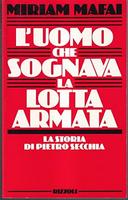Subject

photo credits: Wikimedia Commons
The Italian Communist Party (Italian: Partito Comunista Italiano, PCI) was a communist and democratic socialist political party in Italy. It was founded in Livorno as the Communist Party of Italy (Italian: Partito Comunista d'Italia, PCd'I) on 21 January 1921, when it seceded from the Italian Socialist Party (PSI), under the leadership of Amadeo Bordiga, Antonio Gramsci, and Nicola Bombacci. Outlawed during the Italian fascist regime, the party continued to operate underground and played a major role in the Italian resistance movement. The party's peaceful and national road to socialism, or the "Italian Road to Socialism", the realisation of the communist project through democracy, repudiating the use of violence and applying the Constitution of Italy in all its parts, a strategy inaugurated under Palmiro Togliatti but that some date back to Gramsci, would become the leitmotiv of the party's history.Having changed its name in 1943, the PCI became the second largest political party of Italy after World War II, attracting the support of about a third of the vote share during the 1970s. At the time, it was the largest Communist party in the Western world, with peak support reaching 2.3 million members in 1947, and peak share being 34.4% of the vote (12.6 million votes) in the 1976 Italian general election. The PCI was part of the Constituent Assembly of Italy and the Italian government from 1944 to 1947, when the United States ordered a removal from government of the PCI and PSI. The PCI–PSI alliance lasted until 1956; the two parties continued to govern at the local and regional level until the 1990s. Apart from the 1944–1947 years and occasional external support to the Organic centre-left (1960s–1970s), which included the PSI, the PCI always remained at the opposition in the Italian Parliament, with more accommodation as part of the Historic Compromise of the 1970s, which ended in 1980, until its dissolution in 1991, not without controversy and much debate among its members.The PCI included Marxist–Leninists and Marxist revisionists, with a notable social-democratic faction being the miglioristi. Under the leadership of Enrico Berlinguer and the influence of the miglioristi in the 1970s and 1980s, Marxism–Leninism was removed from the party statute. The PCI adhered to the Eurocommunist trend that sought independence from the Soviet Union, and moved into a democratic socialist direction. In 1991, it was dissolved and re-launched as the Democratic Party of the Left (PDS), which joined the Socialist International and the Party of European Socialists. The more radical members of the organisation formally seceded to establish the Communist Refoundation Party (PRC). Source: Wikipedia (en)
Works about Italian Communist Party 3
Subject - wd:Q461886

